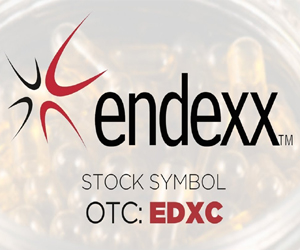Cannabis M&A – A Template for Success, Part 2 – Negotiating the LOI
Marijuana Industry News November 23, 2020 MJ Shareholders 0


In Part 1, Erik Ott of investment bank KO Acquisitions explained how to get your cannabis company ready for an M&A transaction by concentrating on corporate hygiene. In Part 2, Ott examines the process and key elements involved in the non-binding Letter of Intent (LOI).
You’ve given a few tours, talked with senior management, and probably talked high level numbers. Now it’s time for the offer which will be delivered via a non-binding Letter of Intent. This is a critical phase of the process, as it sets forth both the road map and the guardrails for the entire transaction. During this phase you can (and should) negotiate many of the deal details so you can share them with all stakeholders and their chosen legal and tax advisors when you begin to draft the Definitive Agreement. This will save time and money and make for a less stressful process.
Naturally, all eyes tend to be focused on valuation during the LOI phase – but it is just as important to focus on terms. A typical cannabis LOI will consist of a small percentage of cash, a lot of stock, and a to-be-earned component based on hitting future targets. Assuming the purchase price (compensation paid at close) has a stock component, it will be critical for sellers to begin “reverse” due diligence at this stage to understand the financial health of the buyer and any restrictions to stock liquidity. For example, sellers may not realize what they are getting into with a company that may have subordinated debt, lots of warrants and other financial engineering issues that sellers only come to understand in the weeks leading up to closing. Furthermore, companies that trade on the CSE have rules pertaining to how and when you can sell stock, and in quite a few cases sellers have inked deals with acquirers only to subsequently learn about barriers to disposing of shares. An up-front understanding of the risks associated with being a shareholder on the CSE/TSX Pubco will decrease the likelihood that a seller gets cold feet later in the process.
Another popular deal term in most LOIs is an earn out. There are many reasons buyers request an earn out. A common reason is that many buyers lack the infrastructure and management expertise in the state where the acquisition target is located, and therefore need current management to stick around to manage growth. A large carrot at the end of year two or three is one way to accomplish that goal. Further, earn outs protect buyers from being burned by sellers that have provided overly optimistic financial projections. Providing well-grounded projections based on numbers that one can “hit and exceed” are better than the constant reasons given for consistently “missing” on the projections provided by management. Finally, the structure of the earn out requires alignment between all stakeholders. Is the earn out going to be revenue focused or an EBITDA calculation? If it is the latter, what is the exact EBITDA formula to be used? A successful earn out structure is one where the seller earns the maximum amount of the consideration as this drives shareholder value to both entities and reduces the likelihood of future legal disputes.
Many LOIs also utilize seller notes or other forms of deferred payments, which benefit the buyer by pushing payment out to a future date in return for some sort of “security” for the seller in the event of default. It is not uncommon for buyers to make a contingent offer for cash that they do not currently have on their balance sheet – i.e., they are betting on their ability to earn (or raise) the cash to make good when the note comes due. This is a risky practice, as it is very hard to predict where the industry will be years from now. Hammering out deferred payment terms requires significant time and energy, as parties will need to contemplate and agree on multiple “what-if” default scenarios.
One concerning M&A trend in cannabis is buyers walking away from a signed deal. Recently, Schwazze terminated five of the ten deals they were pursuing in Colorado, and many other cannabis firms have been unable to close deals. Some might suggest that it is simply a function of the capital market implosion that has restricted access to the capital required to close transactions. Given the importance of M&A to an MSO’s strategy, it is not uncommon for an MSO to have between 5-10 signed LOIs at any given time, without the wherewithal to complete more than two or three transactions. This weighs on sellers who typically sign an exclusive “no-shop” (a period of time where sellers cannot speak with other suitors), then may be left at the altar with heavy opportunity costs and a big bag of legal debt.
To address this, sellers must negotiate a break-up fee in the event the buyer walks away. While buyers are typically reluctant (“we haven’t done any due diligence”), there a quite a few ways to handle this issue. Sellers can prepare well up front, inviting buyers to engage in as much due diligence as they desire before signing the LOI. Another approach is to have a hard date where due diligence is deemed complete and the break-up fee is triggered. Critical in all of this is the communication between the two parties in the transaction. Sellers need to understand that even when they sign an LOI they are still subject to the buyer’s ability to close multiple deals in their pipeline. Asking the hard questions early in the process to understand just how “mission-critical” you are for a buyer often reveals information that might make you reconsider committing time and resources to that buyer.
LOI negotiations are a critical point in the process and often the last time a seller has negotiating leverage. Executing a comprehensive LOI goes a long way toward streamlining the process, reducing legal fees, and mitigating risk to the deal.
MJ Shareholders
MJShareholders.com is the largest dedicated financial network and leading corporate communications firm serving the legal cannabis industry. Our network aims to connect public marijuana companies with these focused cannabis audiences across the US and Canada that are critical for growth: Short and long term cannabis investors Active funding sources Mainstream media Business leaders Cannabis consumers










No comments so far.
Be first to leave comment below.